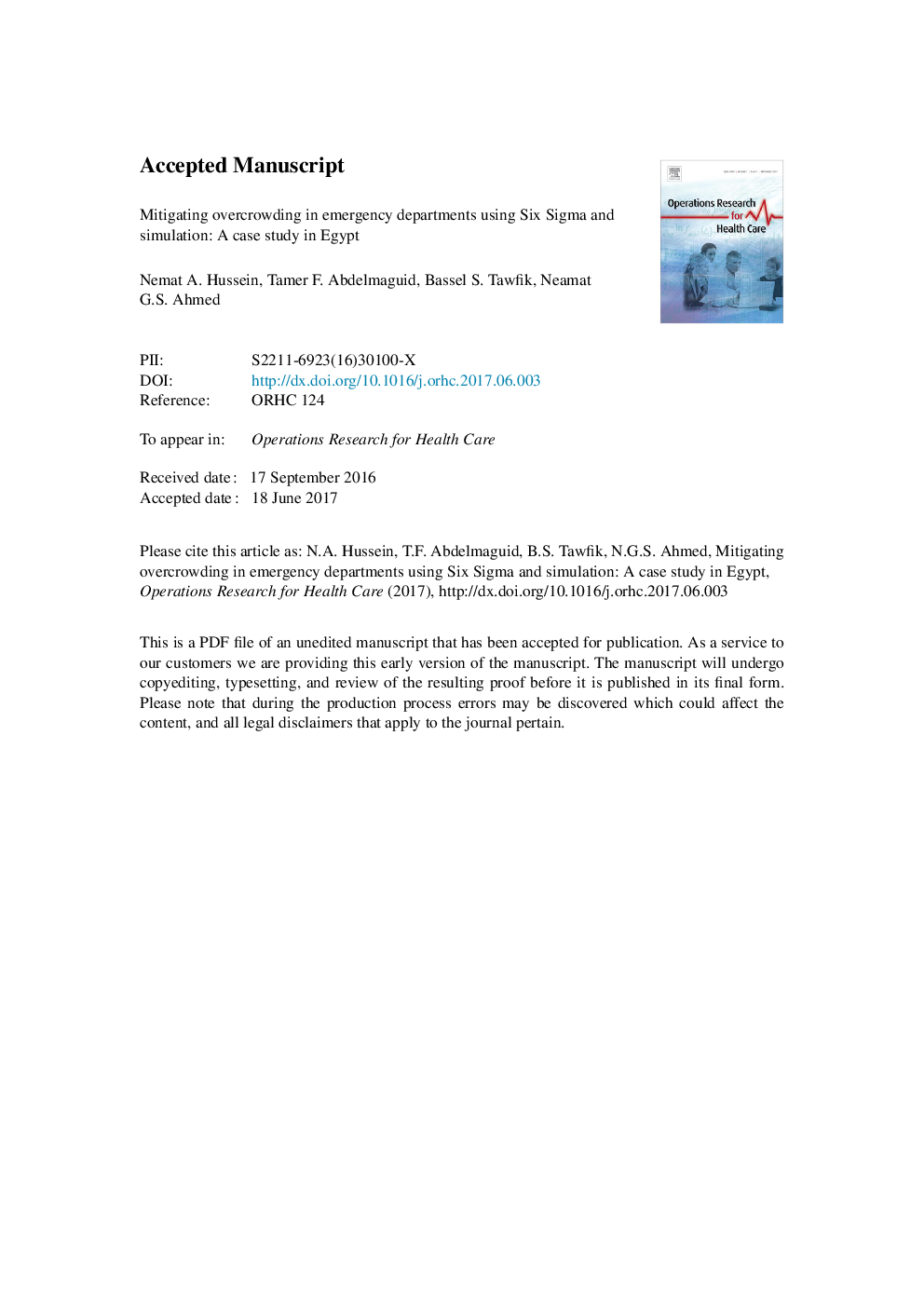ترجمه فارسی عنوان مقاله
کاهش تقارن در بخش های اورژانس با استفاده از شش سیگما و شبیه سازی: مطالعه موردی در مصر
عنوان انگلیسی
Mitigating overcrowding in emergency departments using Six Sigma and simulation: A case study in Egypt
| کد مقاله | سال انتشار | تعداد صفحات مقاله انگلیسی |
|---|---|---|
| 84329 | 2017 | 28 صفحه PDF |
منبع

Publisher : Elsevier - Science Direct (الزویر - ساینس دایرکت)
Journal : Operations Research for Health Care, Volume 15, December 2017, Pages 1-12

